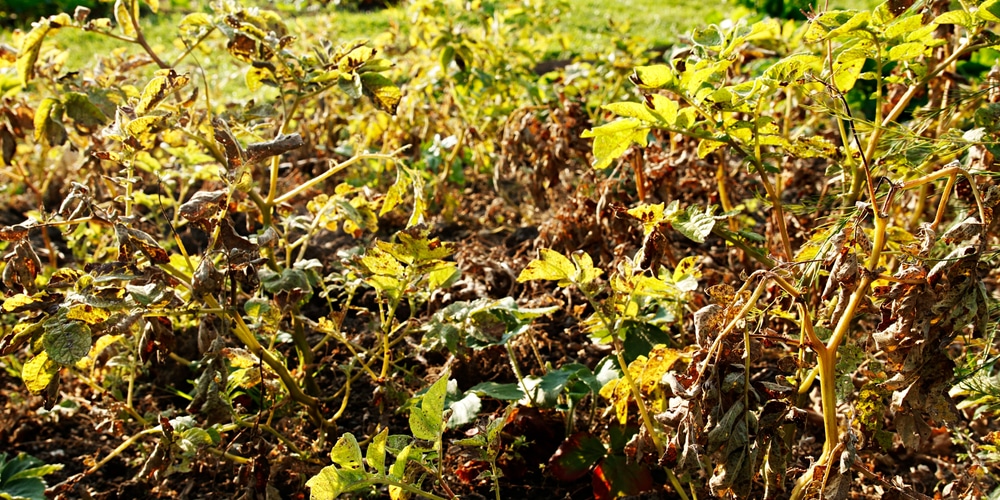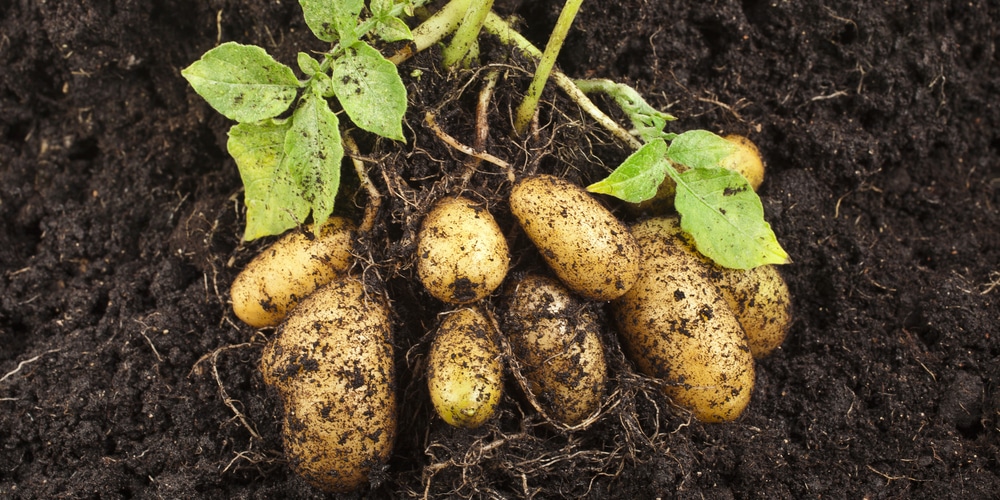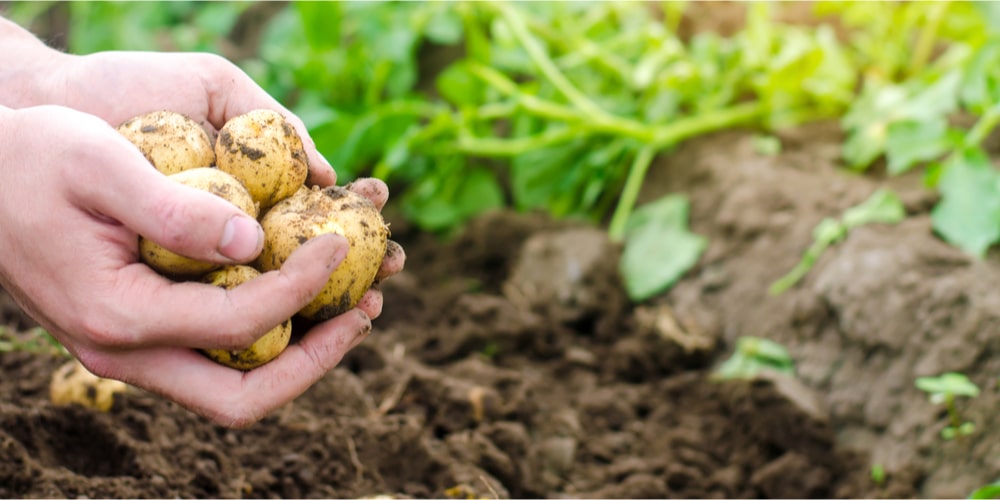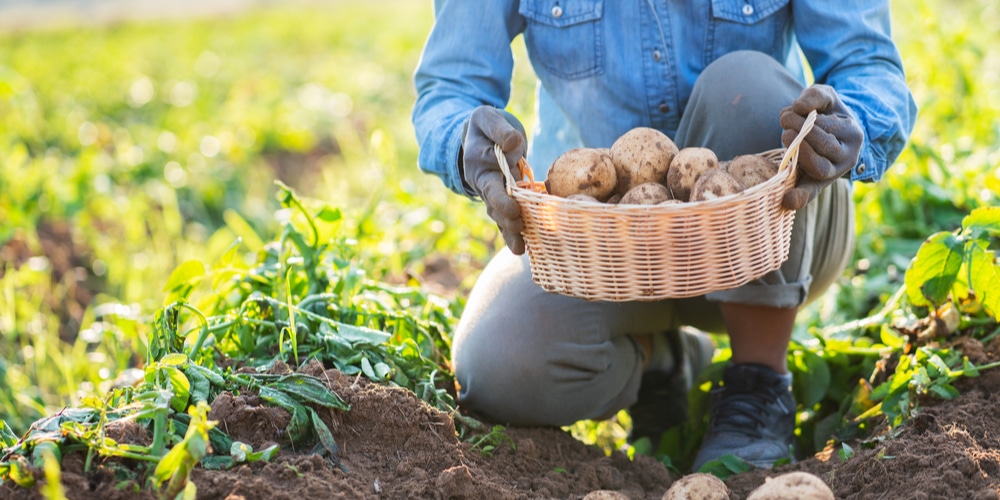Planting potatoes in Georgia varies slightly based on the specific climate within the state, from the cooler mountain regions to the warmer southern areas.
| Region in Georgia | Optimal Potato Planting Time | Details |
|---|---|---|
| North Georgia | Late February to early March | Cooler temperatures may delay planting; protect from late frosts. |
| Middle Georgia | Mid-February to early March | A slightly earlier start due to warmer conditions than the north. |
| South Georgia | Early to mid-February | The warmest region allows for the earliest planting dates. |
Additional Tips:
- Soil Preparation: Ensure the soil is well-drained and fertile. Amend with compost or well-rotted manure before planting.
- Chitting: Consider sprouting (chitting) your potato seeds indoors a few weeks before planting to encourage early growth.
- Frost Protection: Be prepared to cover young plants if an unexpected frost is forecasted after planting.
- Watering: Keep the soil consistently moist, especially once tubers begin to form.
- Harvesting: Potatoes are typically ready to harvest when the foliage begins to die back, approximately 2-4 weeks after the plants have finished flowering.
Planting at these optimal times can help ensure a successful potato crop in Georgia, taking advantage of the state’s growing conditions.
Optimal Planting Times for Potatoes in Georgia
When planting potatoes in Georgia, timing is key for a successful harvest. Georgia’s mild and humid climate offers ideal conditions for growing potatoes, but they must be planted at the correct time.
Mid-February to Mid-March is generally the best time to plant potatoes in the state. During this period, the last frost dates have typically passed and soil temperatures begin to warm up, providing an opportune environment for potato tubers to thrive.
Regional Considerations:
- In northern regions like Gainesville or Athens, gardeners should wait to plant until soil temperatures consistently reach at least 45°F (7°C).
- In central and southern regions of Georgia, gardeners have more flexibility with planting dates due to a generally warmer climate.
Soil Preparation:
- Potatoes prefer moderately acidic soil with a pH between 4.8 and 5.4.
- A soil test is recommended to determine current soil fertility and pH levels.
Planting Depth & Spacing:
- Seed potatoes should be planted in a small hole about 4-6 inches deep.
- Each seed potato should be spaced approximately 12-15 inches apart.
- Rows should maintain a distance of 15 to 24 inches to allow for growth.
Selecting Potato Varieties Suitable for Georgia’s Climate
Georgia’s climatic conditions are generally favorable for a range of potato varieties, each with its own set of characteristics that can thrive in the warm and long growing season the state offers. When choosing potato varieties to plant, growers should focus on those that are adapted to the local climate and resilient to its challenges.
Heat Tolerance: The state’s warm temperatures necessitate choosing potato varieties that can endure the heat without compromising tuber development. Varieties such as ‘Red Pontiac’ and ‘Yukon Gold’ are renowned for their ability to perform well in warmer climates.
Disease Resistance: With humidity and warmth comes the risk of diseases like blight. Varieties like ‘Kennebec’ and ‘Cherokee Red’ are commended for their resistance to common potato diseases.
| Variety | Heat Tolerance | Disease Resistance | Maturation Period |
|---|---|---|---|
| Red Pontiac | High | Moderate | 90-110 days |
| Yukon Gold | High | Moderate | 65-90 days |
| Kennebec | Moderate | High | 70-90 days |
| Cherokee Red | Moderate | High | 90-110 days |
Georgia gardeners should start with these varieties and adjust according to their local microclimate. Observations and local knowledge are invaluable for determining the best-suited potatoes for one’s specific location in Georgia. Early trials and adjustments can lead to successful harvests and an enjoyable gardening experience.
Soil Preparation and Fertilization for Potatoes
Prior to planting potatoes in Georgia, gardeners must ensure the soil is adequately primed. The process begins with tilling the soil to a depth of 8 to 10 inches to allow for proper tuber development. Achieving a soil pH of 5.8 to 6.5 is essential; testing and adjusting the soil accordingly is recommended. Amendments like well-rotted compost can improve texture and fertility.
For fertilization, a balanced approach is beneficial. A complete fertilizer such as a 10-10-10 may be applied at a rate of 1.5 pounds per 100 square feet. This should be done prior to planting to ensure nutrients are available when needed.
Key Steps for Optimal Soil and Fertilization:
- Tillage: Loosen soil to a depth of 8 to 10 inches.
- Soil pH: Adjust to the desired 5.8 to 6.5 range.
- Amendments:
- Compost (for texture and nutrients)
- Organic matter (to enhance soil structure)
- Fertilizer application:
- Apply 10-10-10 fertilizer at 1.5 lbs/100 sq ft.
- Gently firm the soil over the seed potatoes after planting.
- Mulching:
- Consider adding a layer of straw to retain moisture and protect from direct sunlight.
Planting Techniques for Potato Cultivation
Planting potatoes in Georgia requires careful attention to soil preparation, seed positioning, and timing. Gardeners should optimize their planting to ensure healthy growth and a bountiful harvest.
Soil Requirements:
- Ideal soil: Sandy loam with ample organic matter
- Soil conditions: Well-drained, as potatoes cannot thrive in waterlogged soil
- pH level: Slightly acidic, around 5.0-5.5
Seed Preparation:
- Cut potatoes into chunks with at least one or two eyes
- Allow seed potatoes to dry and heal over for a day before planting to prevent rot
Planting Process:
- Seed Placement:
- Depth: Dig a hole about 4-6 inches deep
- Spacing: Place seed pieces approximately 12-15 inches apart
- Soil Mounding:
- After placing the seed potatoes, cover them with a 2-3 inch layer of soil
- As plants grow, periodically hill additional soil around the stems to support growth and prevent sunlight exposure, which can turn tubers green and toxic
Care and Maintenance for Growing Potatoes
When cultivating potatoes, gardeners must provide consistent care and maintenance to ensure a bountiful harvest.
One crucial factor is soil moisture; potatoes require evenly moist soil. An absence or excess of water can lead to poor tuber development. A regular watering schedule of 1 to 2 inches per week is recommended.
Proper hilling of potatoes is pivotal. As they grow, they should be partially covered with soil, compost, or straw to protect them from sunlight, which can produce a toxin called solanine.
Begin hilling when the plant is about 6 inches tall and continue every few weeks:
- First Hilling: When plants are 6 inches tall
- Subsequent Hillings: Every 2-3 weeks
Fertilization is another essential aspect of potato care. A low-nitrogen fertilizer can promote healthy root development without excessive foliage. It’s advisable to fertilize at planting and again midseason.
Weed control is necessary to reduce competition for nutrients. Mulching can help suppress weeds, retain soil moisture, and regulate temperature.
Pest and disease management involves vigilant monitoring for common issues such as potato beetles or blight. Organic or chemical controls should be used as appropriate.
In terms of harvesting, timing and technique are important. Potatoes are usually ready when foliage starts to yellow. Care should be taken to dig them up without damaging the tubers.
| Care Aspect | Action | Timing |
|---|---|---|
| Watering | 1-2 inches per week | Consistent throughout growth |
| Hilling | Cover with soil | Start at 6 inches tall |
| Fertilization | Apply low-nitrogen fertilizer | At planting & midseason |
| Weed Control | Mulch and manually remove weeds | As needed |
| Pest/Disease Control | Monitor and treat | Upon identification |
| Harvesting | Careful digging when foliage yellows | When plants mature |
Frequently Asked Questions
When embarking on the satisfying venture of planting potatoes in Georgia, gardeners must account for factors like climate variations and soil conditions. These common questions provide guidance to ensure a fruitful harvest.
What is the best time of year to plant potatoes in Georgia?
The optimal window for planting potatoes in Georgia generally falls between mid-February and mid-March. The state’s mild and humid climate during this period creates an ideal environment for potatoes to thrive.
How does planting time vary for different potato varieties in Georgia?
Different potato varieties may have slightly varied planting schedules. Early-season varieties can usually be planted sooner, whereas mid-season and late-season varieties may require planting a bit later, ensuring they mature under favorable temperatures.
Is there an optimal soil temperature for planting potatoes in Georgia?
Potatoes prefer a soil temperature range between 50-75 degrees Fahrenheit for ideal growth. This temperature range encourages successful sprouting and root development.
What is the recommended planting schedule for potatoes in Georgia’s climate zones?
Gardeners should locate the last average frost date for their specific climate zone in Georgia and subtract 40 days to determine the right planting schedule. This ensures that the potatoes can be transitioned safely from indoor seeding to the garden.
Can potatoes be successfully grown in containers in Georgia, and if so, when should they be planted?
Yes, potatoes can be grown in containers in Georgia. This method follows a similar planting schedule to ground planting, adjusting as needed based on microclimates created by the containers themselves.
How does the planting time for sweet potatoes in Georgia differ from other potato varieties?
Sweet potatoes, which thrive in warm temperatures, are typically planted a bit later in the season after the danger of frost has passed.
This is usually from late April to June, depending on Georgia’s zone-specific climate.
Last update on 2025-04-03 / Affiliate links / Images from Amazon Product Advertising API






